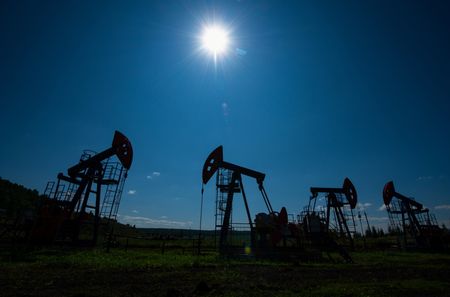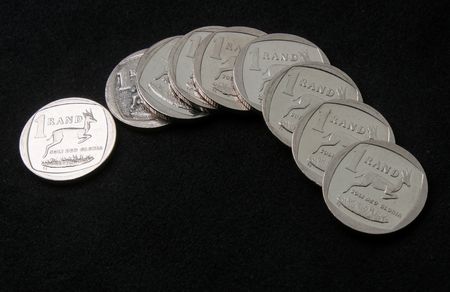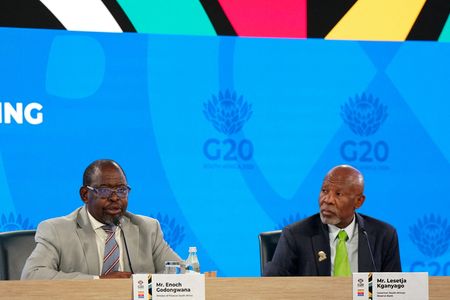By Stephanie Kelly and Arunima Kumar
NEW YORK (Reuters) – Oil prices fell to negative territory after rising by a dollar in post-settlement trade on Wednesday as U.S. President Donald Trump announced reciprocal tariffs on trading partners, stoking concerns that a global trade war may dampen demand for crude.
Brent futures settled 46 cents higher, or 0.6%, at $74.95 a barrel, while U.S. West Texas Intermediate crude futures gained 51 cents, or 0.7%, to settle at $71.71.
U.S. futures rose by a dollar and then turned negative, along with the Brent contract, over the course of Trump’s press conference on Wednesday afternoon in which he announced tariffs on trading partners including the European Union, China and South Korea.
For weeks Trump has touted April 2 as “Liberation Day,” bringing new duties that could rattle the global trade system.
A chart listing countries and tariffs that Trump showed during his announcement did not detail tariffs on Canada and Mexico. However, USMCA-compliant goods from Mexico and Canada, including oil, would remain exempt from the tariffs, a senior official told Reuters.
Canada supplies some 4 million barrels per day of its crude oil to the United States.
Trump’s tariff policies could stoke inflation, slow economic growth and escalate trade disputes, possibilities that have limited oil price gains.
“Crude prices have paused last month’s rally, with Brent finding some resistance above $75, with the focus for now turning from a sanctions-led reduction in supply to Trump’s tariff announcement and its potential negative impact on growth and demand,” said Ole Hansen, head of commodity strategy at Saxo Bank.
Comments from Mexico eased some worries about a trade war between the two countries after Mexican President Claudia Sheinbaum said on Wednesday that Mexico does not plan to impose tit-for-tat tariffs on the United States.
“Oil is selling off a little on the news, and it could introduce some additional trade and economic uncertainties, but I think people were worried it would be more extreme,” said Josh Young, chief investment officer at Bison Interests following Trump’s tariff announcement.
Trump has also threatened to impose secondary tariffs on Russian oil, and on Monday he toughened sanctions on Iran as part of his administration’s “maximum pressure” campaign to cut its exports.
Adding to the complex global supply picture, Russia, the world’s second-largest oil exporter, on Wednesday imposed restrictions on another major oil export route, suspending a mooring at the Black Sea port of Novorossiisk a day after restricting loadings from a key Caspian pipeline.
Russia produces about 9 million barrels of oil a day, or just under a tenth of global production. Its ports also ship oil from neighbouring Kazakhstan.
Meanwhile, investors on Wednesday shrugged off mostly bearish U.S. government crude inventory data. U.S. crude inventories posted a surprisingly large build of about 6.2 million barrels last week, Energy Information Administration data showed. [EIA/S]
“The report was bearish in my view, with larger crude inventories and total petroleum inventories rising,” UBS analyst Giovanni Staunovo said. “But the market took it as neutral, as the crude build is driven by a sharp increase in Canadian crude imports, likely ahead of the fear of the introduction of new tariffs.”
(Reporting by Stephanie Kelly, Laila Kearney and Shariq Khan in New York, Liz Hampton in Denver, Trixie Yap in Singapore and Arunima Kumar in Bengaluru; Additional reporting by Paul Carsten in London and Georgina McCartney in Houston; Editing by David Goodman, Joe Bavier, Kevin Liffey, Nia Williams, Will Dunham, Deepa Babington and Cynthia Osterman)








